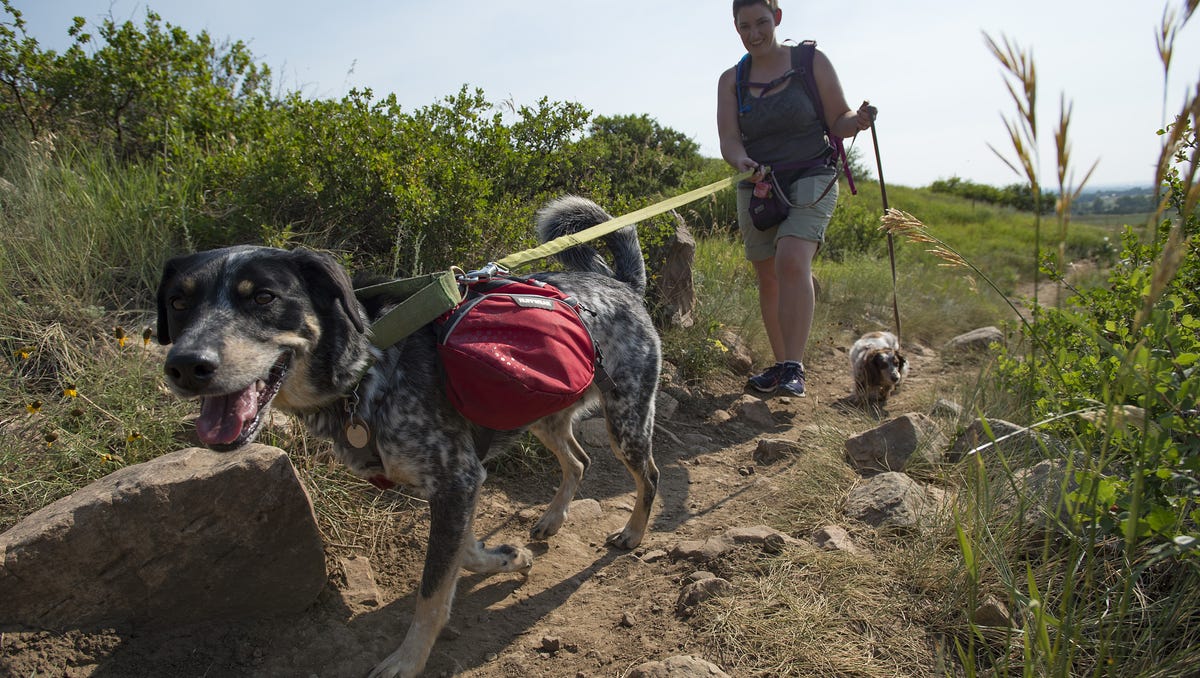South Dakota
Letting go is difficult after going afield with a good dog • South Dakota Searchlight

Mary knew it was time before I did. Or maybe I should say she admitted it before I could.
Giving up on a dog, even when it’s pretty clearly time, can be difficult. And I needed some help from my wife, and from our vet, in recognizing the obvious.
So the time for Rosie, our 14-year-old springer spaniel, came one day last week, after a two-year decline that accelerated over the last six months and especially the last six or eight weeks.
Mary was home sick, so I sat alone with Rosie in an examination room at the animal clinic, talking to her and stroking her head and side as she drifted off, giving in peacefully to the sedative the vet had injected a few minutes earlier. Then I started to sob as I touched the call button summoning the vet and her assistant, who was pushing a cart that would take Rosie into the room where the final drug would be administered.
“I’m so sorry,” the vet said. “We’ll take good care of her.”
I left Rosie in their gentle hands and wept my way out of the exam room, down the hall, through the lobby and on to my pickup.
And when I settled in behind the wheel, I felt Rosie’s leash in the pocket of my jacket and acknowledged through my tears that a dog that had been such an important “is” in my life had become a “was.”
I do not mean to overstate the emotions of this. Obviously, the loss of a dog is not the same as the loss of a human being. But it is the loss of a life. A life that mattered.
For most of her 14 years with us, Rosie was a high-energy force of nature in our home and out across the wild lands of our state, leading me with the gift of her nose through mucky cattails and dense upland grasses and deep-woods aspen groves.
East River. West River. Missouri River country. Black Hills highlands. We explored them all, wet and dry, windy and calm, hot and cold and quite a bit in-between.
She loved best the kind of difficult-to-traverse coverts that Pennsylvania writer Charles Fergus called “thick and uncivil sorts of places,” and I got to know them better and love them more deeply by sharing them with her.
Oh, the things you can learn by going afield with a good dog. Magical, enduring things, about the outdoors, about the dog, about yourself.
We watched more sundowns together than I could count, usually when a bird hunt was done, we were both tired and fulfilled and often enjoying the added gift of coyote song. Rosie always raised her ears and cocked her head at the music, listening intently as if trying to decipher some canine-encrypted code.
The call of the wild? Of course. And she understood it much better than I did.
Oh, the things you can learn by going afield with a good dog. Magical, enduring things, about the outdoors, about the dog, about yourself.
But she wasn’t just a strong bird dog. She also was a talented backyard escape artist and unreconstructed garbage gut with a special affinity for kids’ sweat socks, the sweatier and dirtier the better.
I’ll skip the undignified details about how those socks, once swallowed, worked their way out, one way or the other. But Rosie processed a dozen or so over the years, with great effort but without requiring emergency room care.
She was a licker, not a fighter, that dog, known in our family and throughout our neighborhood for her sweet, outgoing personality. And she was especially fond and tolerant of the 19 grandchildren — now ranging in age from a gainfully employed college graduate to a toddler — who got to bask in her affection and be her pal.
I bought her from a kennel out in the James River breaks when she was eight weeks old and officially named her James River Rose. But I rarely called her anything but Rosie.
She was the most headstrong and challenging dog I’ve had to train, or to control in the field, but also the most athletic and relentless on bird scent. And despite the occasional adrenaline-driven indiscretion, at her core Rosie aimed to please.
She was six months old when she flushed and retrieved her first prairie grouse and a few weeks older when she did the same with her first rooster pheasant. And a year or two later, she led me to three ruffed grouse — a noteworthy limit on the first day I ever saw a Black Hills ruffy — in a disorderly gathering of willow and aspen and birch deep in a spring-fed hollow up off Tinton Road south of Spearfish.

She made a four-hour round-trip drive for a two-hour hunt worth it every time, even if all we trailed and flushed were a couple of hen pheasants. “No shot, girl,” I would say, and I praised her just as effusively as if we’d bagged three roosters.
She was puzzled whenever I missed a bird, ecstatic when I hit one and even in the most inhospitable of cover rarely missed a retrieve.
When we weren’t hunting pheasants or grouse, we were often up on the trails in the forest above our house in Rapid City, where Rosie maintained her nosy optimism, fervently believing — despite overwhelming odds to the contrary — that there was a pheasant or grouse waiting to be flushed around the next bend.
Never a slacker, she stayed blue-collared busy, whether snuffling her way through a Lyman County sorghum field or — in her younger days, at least — frantically chasing butterflies and even bird shadows back and forth across the backyard grass.
She was unremittingly upbeat and never failed to lift my spirits, even at the lowest of times.
Then came the decline, slow at first, much faster near the end. It was nothing out of the ordinary: an old dog with a bunch of old-dog ailments that finally reached her time.
And an old-dog lover who needed some help in admitting it.
GET THE MORNING HEADLINES.

South Dakota
Obituary for Bonnie Lou Loudenslager at Miller Funeral Home & On-Site Crematory

South Dakota
Obituary for Jake Joseph Lien at Osheim & Schmidt Funeral Home

South Dakota
South Dakota State gets 2 touchdowns from Julius Loughridge in 37-21 win against Drake

google-site-verification: google9919194f75dd62c5.html



















